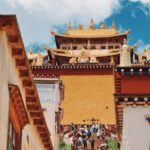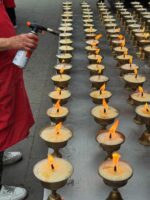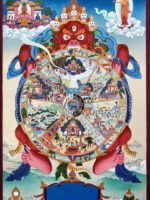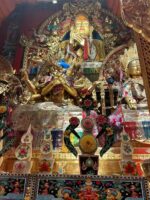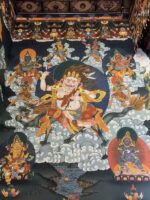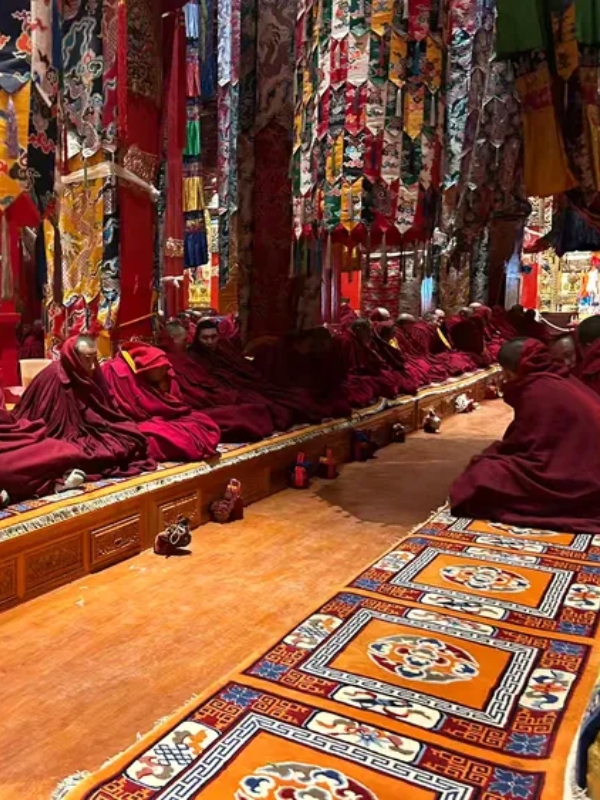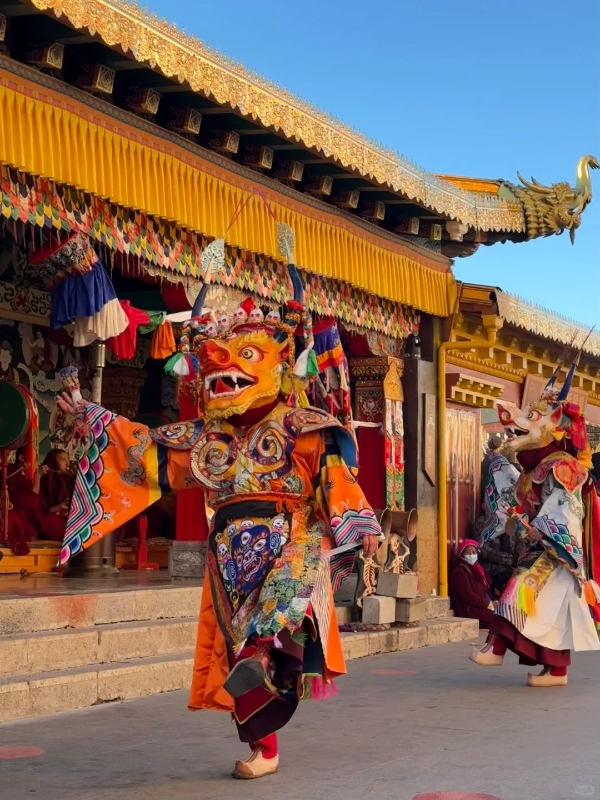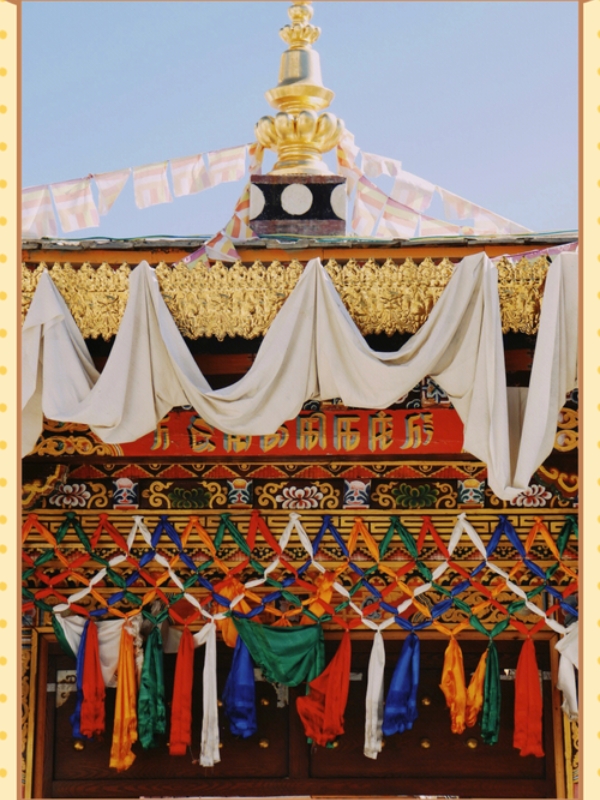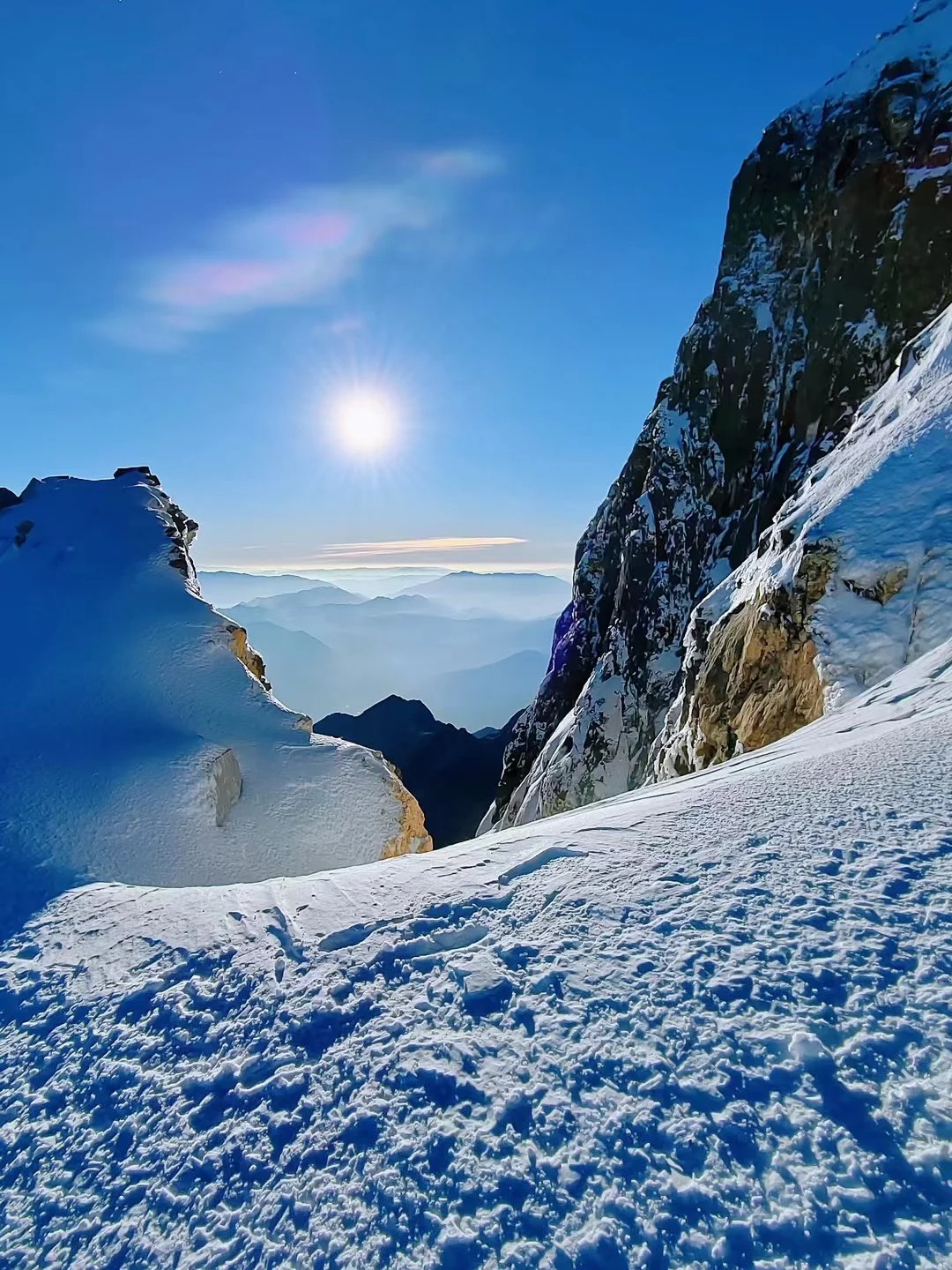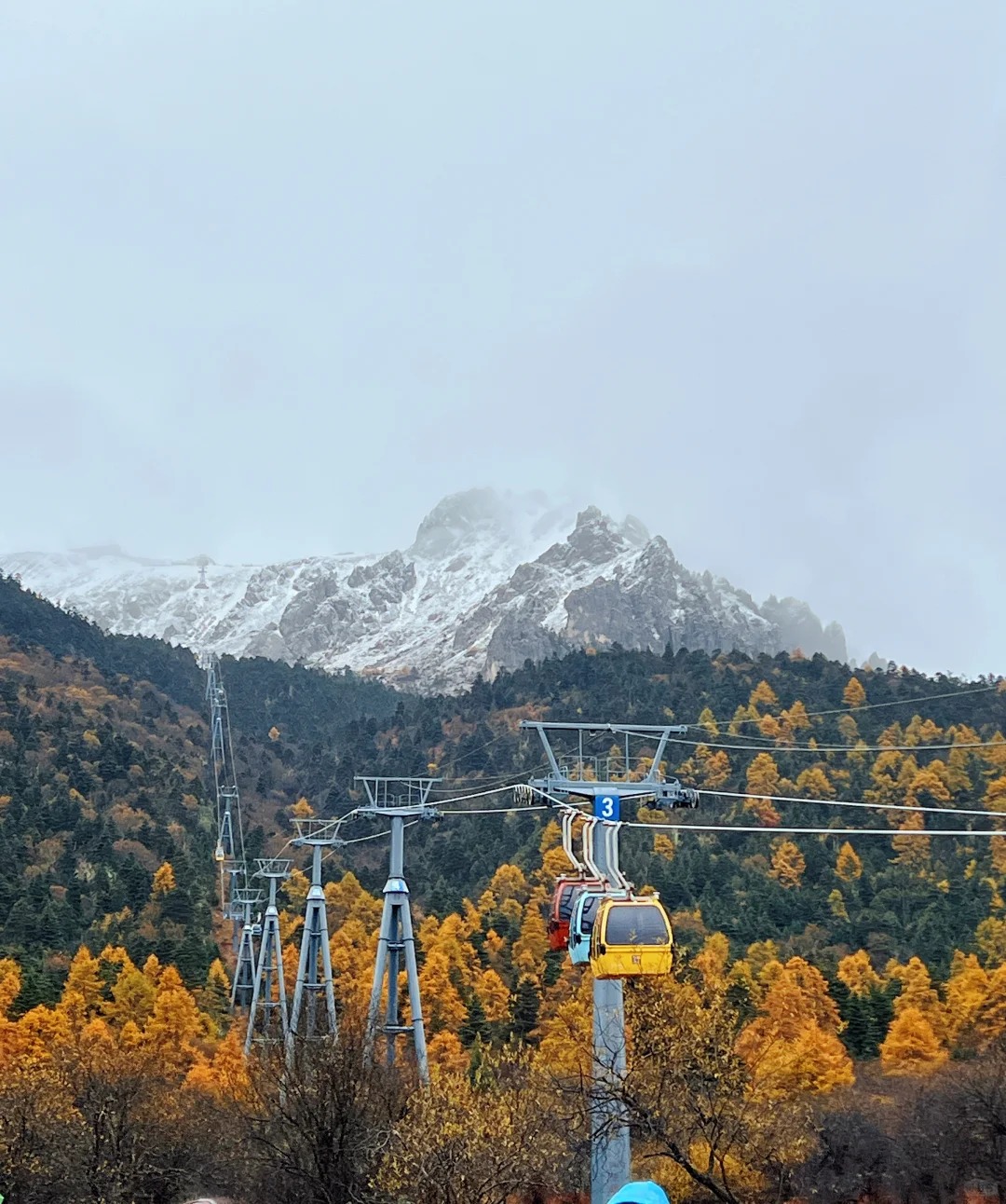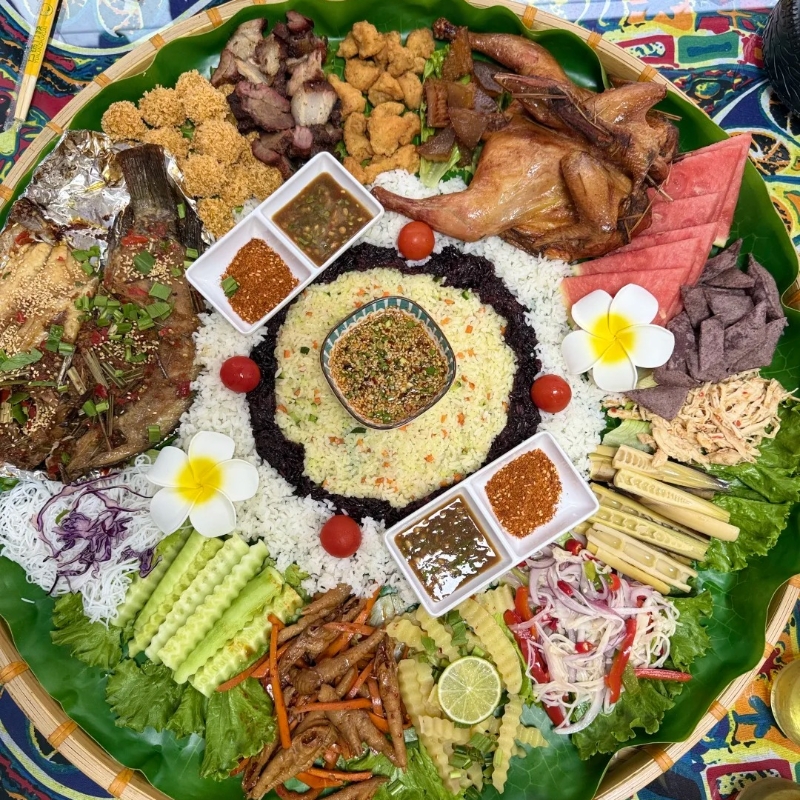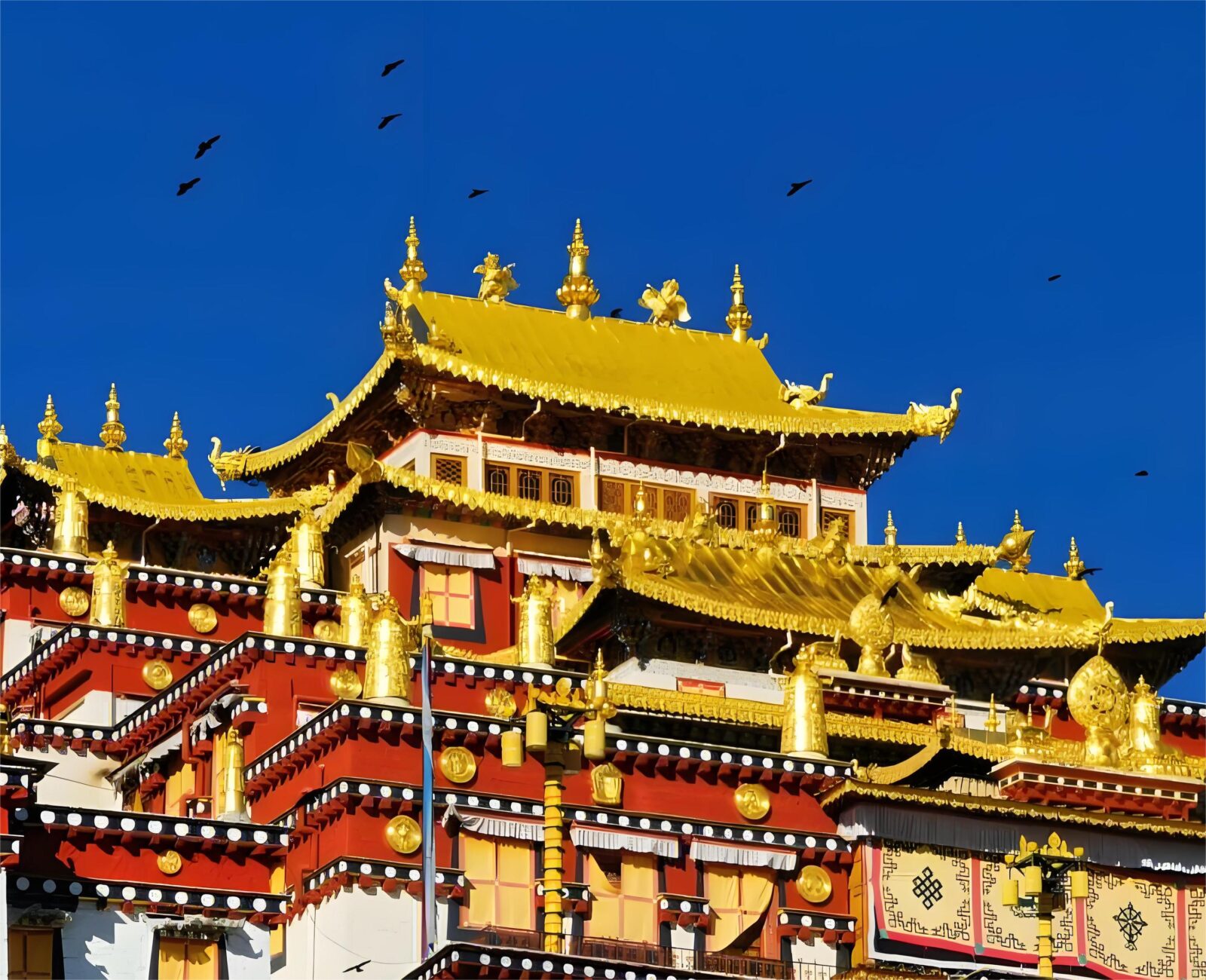
Songzanlin Monastery
Curious about Lhasa's Potala Palace but don't want the hassle of permits and elevation? Then Songzanlin Monastery is your best bet! Located 5km north of Shangri-La City at a lofty elevation of 3,380m, it is the largest Tibetan Buddhist monastery in Yunnan and home to around 700 monks who live here year-round. True, you'll have to climb 146 steep stone steps (and the elevation) and may have to maneuver through tourists dressed in rented costumes, but believe me, all this in itself is of little importance. The reward is great—monks chanting at dawn, golden-roofed interiors hung with murals centuries old, and a holy lake where groping-worshippers can murmur their prayers in silence.
When is the time to go for festivals? How to go when there are those stone steps to be negotiated? Where to get that famous reflection picture at Lamuyangcuo Lake? This guide will tell you everything concerning prices (including hidden expenses), tourist etiquette, how disrespectfully to photograph monks and all the rest. If a complete trip or merely a visit on your way to Pudacuo National Park (click it, check the guide to the park), or a call from Dukezong Ancient Town for the morning, you will know just what to do (and what to avoid) at this institute of Shangri-La.
Songzanlin Monastery Quick Facts and Why They Matter
| Category | Details |
|---|---|
| 🏷️ Aliases & Tibetan Name | Tibetan: Ganden Sumtseling; Chinese aliases: "Little Potala Palace", "Guihua Monastery" (Qing Dynasty name) |
| 📍 Location | No. 3 Niwang Road, Jiantang Town, Shangri-La City, Yunnan Province (5km north of city center, 3,380m elevation) |
| 🏯 Layout | Hillside-built complex with 146 steps leading to main halls (Zhacang, Jikang) at the top; 8 surrounding study colleges; fronted by Lamuyangcuo Lake |
| 🎨 Architectural Style | Fusion of Tibetan (golden roofs) and Han Chinese (108 pillars) styles; vivid murals, intricate thangkas, and gilded Buddha statues |
| ⛩️ Religious Status | Largest Tibetan Buddhist monastery in Yunnan; key Gelugpa (Yellow Hat sect) center with ~700 resident monks |
| 🙏 Spiritual Symbol | Hosts daily prayers and annual Gedong Festival; clockwise kora (circumambulation) is a core devotional practice for pilgrims |
| 👥 Suitable For | Religious culture enthusiasts, cultural travelers, photographers, and those interested in Tibetan Buddhism |
| ⚠️ Taboos & Etiquette | Remove hats/sunglasses indoors; no photos inside halls; walk clockwise; cover shoulders/knees; don't disturb prayers |
Why Do Travelers Call Songzanlin Monastery the Heart of Tibetan Yunnan?
Songzanlin Monastery – The “Little Potala Palace” of the South
True, the Songzanlin Monastery has the same majestic hillside location and gold roofs as the Potala Palace in Lhasa, but here is what makes it special—you can come here without succumbing to altitude sickness and will see a real monastic life instead of religion in a museum. Built in 1679 to the order of the Fifth Dalai Lama, this monastery in Shangri La County is a remarkable architectural blending—Tibetan gold roofs decorate buildings resting on 108 massive pillars of Han Chinese style, each one representing the Buddhist idea of overcoming the 108 temptations of this earth.
The monastery is of the Gelukpa sect, known as the Yellow Hat sect, which is headed by the Dalai Lama, which gives to Songzanlin a true spiritual authority in southwest China. At any rate, unlike renovated places where tourists go, you will hear the deep resounding of ceremonial horns calling monks to prayer when you mount those steps at dawn, you will smell the wafting of the juniper from the butter lamps and you will see real religious observance.
The Monks and Their Daily Life—A Living Monastery Beyond Time
What these travel books do not tell us: Songzanlin is not frozen in amber. About seven hundred monks live here and study and practice their religion daily. When I was there I saw young monks in their maroon robes hurrying in the morning to prayers while the older ones were sitting about discussing some phase of Buddhist philosophy in the sunshiny courtyards. The wooden floors inside the main halls used so long for religious purposes are worn smooth through years of prostrating worshippers, not through tourists getting their pictures taken know self-centeredly.
This element of life has a price to pay on the part of the visitors—it demands respect. When a monk insisted on my attending the chanting ceremony about eleven-thirty in the morning, I observed tourists in rented Tibetan garments blocking the prayer wheels while posing for pictures. This is a jar. Remember, these halls where the tourists get their Instagram shots are the same areas where the monks take hours in profound meditation. This glory or this element of honesty is the greatest treasure of Songzanlin, but it can only be appreciated if we respect it first.
Love places that carry centuries of prayers in the air? Explore Wenshu Yuan Monastery and feel the calm of ancient devotion.
What Secrets Hide in Its Golden Roofs and Stone Steps?
The 146 Steps — A Path to Enlightenment and Breathless Beauty
These steps symbolize the gradual path to Buddhist enlightenment. In practice, they're steep, uneven stone stairs with prayer flags fluttering on both sides. The first 50 feel manageable, by step 100 you'll understand why altitude prep matters. Watch for pilgrims performing full-body prostrations—taking three steps, lying completely flat, rising, repeating. Some travel hundreds of kilometers this way, putting tourist complaints in perspective.
When you need rest, turn around. The view back toward Shangri-La city and surrounding mountains grows more dramatic with each landing—perfect excuse to pause and snap photos while breathing normalizes. Don't feel embarrassed about breaks; even locals at this altitude pause on these stairs.
Zhacang and Jikang Halls — The Sacred Core of Songzanlin
You'll reach Zhacang Hall at the complex's highest point, accommodating over 1,500 monks during ceremonies. Inside, dim light filters through high windows, hundreds of butter lamps flicker, and juniper incense fills the air. The centerpiece: an 8-meter-tall gilded Shakyamuni Buddha, right hand touching earth, left holding an alms bowl, draped in thousands of white khata scarves symbolizing devotees' pure intentions. Wall murals aren't mere decorations—they're teaching tools depicting the Wheel of Life's six realms and Buddha's journey from Prince Siddhartha to enlightenment.
Jikang Hall honors Tsongkhapa, the 14th-century Gelugpa order founder. Look for butter sculptures—actual yak butter creations by skilled monks that slowly melt, teaching impermanence. Intricate thangkas (silk paintings) hang throughout, used by monks during visualization practices. You'll also find the monastery's largest prayer wheel, requiring multiple people to push the massive cylinder clockwise, activating millions of printed prayers simultaneously.
The Eight Monastic Colleges — Where Faith Meets Learning
Eight smaller buildings surround the main halls—residential study communities where monks specialize in different Buddhist philosophy aspects. Many enter as young as five or six, learning Classical Tibetan, memorizing prayers, studying basic concepts. Afternoon visits might reveal dialectical debates: one monk sits defending a position while another stands challenging his logic with dramatic hand claps—not aggressive, but traditional technique testing understanding. Advanced monks spend 15-20 years earning the geshe degree, roughly equivalent to a Buddhist philosophy PhD.
How Does Faith Shape Everyday Life Here?
- Morning Chants
- Gedong Festival
- Colorful Prayer Flags
Morning Chants and Debates — Glimpses of Monastic Routine
Songzanlin Monastery awakens at 5:30 AM when long Tibetan horns sound across the complex before sunrise. Arrive before 11:30 AM to witness morning prayers lasting 1-2 hours—monks sitting in rows creating a sea of burgundy robes, chanting from memory while senior monks keep time with hand drums and cymbals. You'll feel the vibration in your chest. After prayers, monks receive breakfast—tsampa (roasted barley flour with butter tea), essential at high altitude. Throughout the day, you'll see them studying, debating, and performing tasks like sweeping courtyards and maintaining butter lamps—all part of spiritual practice.
The sacred kora (walking meditation) happens all day—people walking clockwise around the monastery's perimeter, following the sun's path toward enlightenment. Some pilgrims perform full prostrations the entire circuit; others spin handheld prayer wheels containing the compassion mantra "Om Mani Padme Hum." Each rotation activates all the mantras inside. You'll pass mani stones carved with mantras, piled into walls stretching dozens of meters.
The Gedong Festival — Where Rituals Dance Through Centuries
Once annually (usually late December), Songzanlin Monastery transforms for the Gedong Festival—a deeply sacred ceremony attracting Tibetan Buddhist practitioners from across Yunnan, Tibet, and Sichuan. Monks perform cham dances in elaborate masks representing protective deities, while thousands of pilgrims (many who've traveled weeks performing prostrations) fill the square in traditional clothing.
Throughout the day, continuous prayers, teachings by senior lamas, and at sunset, drums thunder and masked figures whirl in the dance's climax. Colorful prayer flags flutter everywhere—the five colors (blue, white, red, green, yellow) representing the five elements, with wind carrying prayers across the landscape as they weather and fade, teaching impermanence.
Why Is Lamuyangcuo Lake Central to Tibetan Faith and Spiritual Energy?
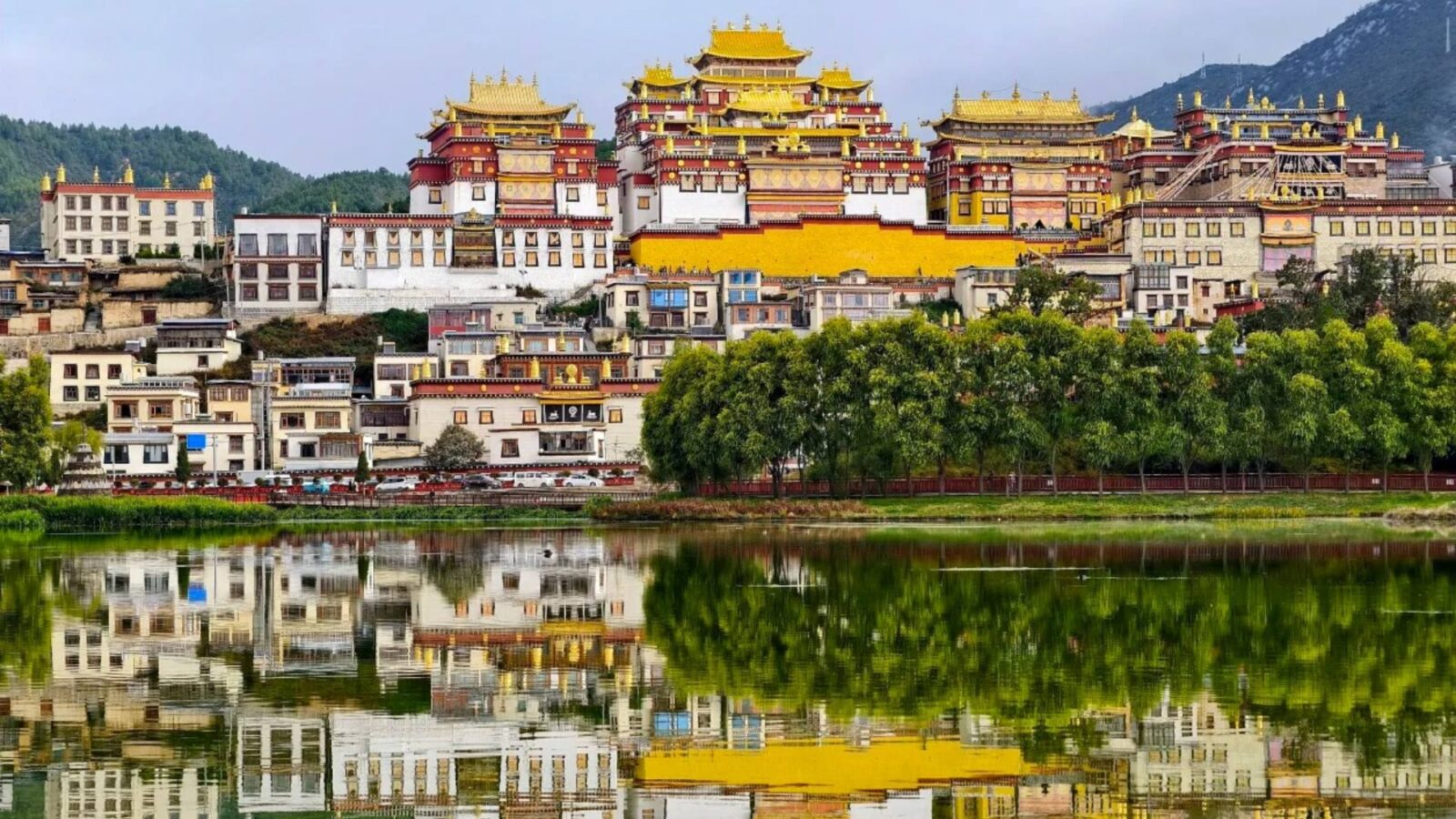
Lamuyancuo
Lamuyangcuo — The Soul Lake of the Goddess Bandanlamu
You'll approach Lamuyangcuo spread before the monastery, its mirror surface reflecting golden roofs and white walls. In Tibetan, its name means the Soul Lake of Goddess Bandanlamu, believed to be her dwelling. The place feels still yet alive, as if breathing with the chants echoing from the halls above.
Before grand ceremonies, lamas walk around the lake with bells, dorjes, and offering bowls. Their slow steps trace invisible circles of protection, turning the scene into quiet ritual theater. The air hums softly with their prayers, and even the wind seems to pause for a heartbeat.
Life around the lake follows sacred rules. No one fishes here; animals roam freely. Locals release fish into the water for merit, each splash carrying a small wish. Sometimes, lamas scatter tsampa or pour sacred water, thanking the lake for its calm watch. It’s a moment that feels less observed than shared.
The 2,110-Meter Kora Trail — A Pilgrimage in Motion
You'll walk a 2,110‑meter wooden boardwalk circling Lamuyangcuo, the monastery’s lower kora route. The stroll takes around 45 minutes, winding past willows, meadows, and grazing yaks owned by local Tibetan families. Pilgrims, tourists, and prayer wheels spin side by side here, creating a rhythm that feels both sacred and casual. Early mornings are quiet and fragrant with butter‑lamp smoke, the air thin but alive.
Two viewing platforms stretch over the lake—one centered, showing the monastery mirrored on still water; the other near Conggulong Village, slightly raised against mountain silhouettes. Standing there, you’ll feel the silence deepen, as if the reflection and the real world are briefly the same thing.
How Much Time Do You Need to Feel Its Spirit?
Visiting Plans — From Quick Glimpses to Deep Immersion
Quick Visit (1.5-2 hours) suits tight schedules or altitude struggles. Take the shuttle up, climb the 146 steps at your pace, visit three main halls—Zhacang, Jikang, and Sakyamuni Hall—snap golden roof photos, then head back. You'll catch the highlights: 8-meter gilded Buddha, colorful Buddhist murals, gleaming copper roofs.
Standard Visit (3-4 hours) works for most people and lets you absorb the atmosphere. After exploring main halls, wander through some of the eight study colleges, then walk to Lamuyangcuo Lake. The lakeside boardwalk offers stunning reflection photos. Don't miss the viewing platform near Conggulong Village—the single best panorama spot. Local secret: climb to Zhacang Hall's second floor (if open) for a rarely seen bird's-eye view showing how buildings stack up the hillside like a miniature city.
Deep Dive (Half to Full Day) appeals to photographers and culture lovers. Arrive before 8:30 AM to witness morning prayers when monks gather, their collective chanting creating otherworldly resonance. Complete the full 2,110-meter lake walk (50 minutes) clockwise. If physically capable, hike up Dongqusheng Hill west of the lake for an elevated view few tourists bother with. Longer visits might reveal Buddhist debate sessions or laypeople performing kora—unscripted moments revealing Songzanlin Monastery's true character.
Pairing Songzanlin with Shangri-La’s Other Treasures
Most visitors pair Songzanlin with other Shangri-La highlights. A popular half-day combination: monastery in the morning (when light and energy are best), then Dukezorg Ancient Town in the afternoon to spin the world's largest prayer wheel and browse Tibetan shops. For a full-day adventure, add Pudacuo National Park, about 40 minutes east. The park's alpine lakes and meadows contrast beautifully with the monastery's architectural grandeur.
If you're doing a longer Yunnan loop, Songzanlin fits naturally between Tiger Leaping Gorge to the south and Meili Snow Mountain to the northwest.
Seasons of Change — How Light and Snow Transform the Monastery
Spring (March-May): You'll see wildflowers covering the meadows. Tibetan barley grows in terraced fields nearby. You'll watch farmers using traditional methods—yaks pulling wooden plows, hand-sowing of seeds.
Summer (June-August): You'll experience afternoon thunderstorms. The lake's surface ripples with rain. Mist shrouds the monastery, creating ethereal scenes where golden roofs float above clouds. Mornings start clear, with storms building by afternoon.
Autumn (September-November): You'll enjoy the most reliable weather. Skies stay clear and temperatures are comfortable. The barley has been harvested, and fields turn golden-brown.
Winter (December-February): You'll see the lake partially frozen. Snow covers the monastery roofs, adding drama to your photographs. Morning temperatures drop well below freezing. Ice crystals form on prayer flags. The scene looks otherworldly—like a Himalayan fantasy kingdom.
What Should You Know Before You Go?
Reaching Songzanlin from Shangri-La City
You'll find Songzanlin Monastery about 5 kilometers north of Shangri-La's city center. You have three main options:
| Transport Option | Cost | Duration | Notes |
| Public Bus No. 3 | ¥1 | ~40 minutes | Drops you near ticket office; walk 2.8 km uphill or take included shuttle bus |
| Taxi | ¥20-30 | ~15 minutes | Direct to entrance; easy to catch return taxi outside scenic area; or search help for Didi |
| Private Car | ¥300-500 | Full day | Best when combining Songzanlin with Pudacuo National Park (40 minutes away) |
Entry Fees, Timings, and Donations Explained
| Item | Cost | Notes |
|---|---|---|
| Entrance Ticket | ¥90 (Peak) / ¥50 (Low) | Includes shuttle bus covering 2.8 km from ticket office to base |
| Operating Hours | 8:00 AM–6:00 PM | Discounts for students and seniors |
| Butter Lamp Donations | ¥40–400+ | Voluntary via QR codes, not required |
| Snacks & Drinks | ¥10–35 | Small café and vendors near entrance; limited options |
Breathing Easy at 3,380 Meters — Altitude Tips That Work
- Altitude: At 3,380 meters, expect thinner air. You may feel shortness of breath, rapid heartbeat, dizziness, or headache.
- Steps: The 146 stairs from entrance to main halls are steep; rest at the 50th and 100th platforms.
- Oxygen: Portable canisters cost ¥40–100. Buy from pharmacies or hospitals, not street vendors.
- Hydration: Drink plenty of water throughout the day; altitude dehydrates quickly. Avoid alcohol the night before.
- Rest: Take stairs slowly with frequent breaks and sleep well the night before visiting.
- Emergency: If severe symptoms persist (headache, vomiting, dizziness), descend and seek help at the medical station near the entrance.
Respect and Reverence — How to Behave in a Living Temple
- Respectful Entry: Remove hats and sunglasses before entering, walk clockwise, and keep your voice low.
- Photography: Forbidden inside halls but allowed in courtyards; ask monks before taking pictures.
- Dress Code: Cover shoulders and knees; no smoking or disruptive behavior.
- Participation: Never interrupt prayers; if invited to rituals, accept respectfully with both hands and a bow.
FAQs: Common Questions Travelers Ask about Songzanlin Monastery
Q: Can I walk up instead of taking the shuttle bus?
You could, but imagine trudging uphill 2.8 km at 3,300 meters—your lungs will scream before you even see the 146 steps. Most travelers hop on the shuttle that’s already included in your ¥90 ticket. Save your legs for the temple stairs and that stunning lake walk; it’s the smarter move unless you’re chasing a personal fitness record.
Q: What's the proper dress code?
Think respectful, not fancy. Shoulders and knees covered, no tank tops or short skirts. At the gate, security actually checks this. Once inside, hats and sunglasses come off. You’ll blend right in with modest jeans and a long-sleeve top—comfort over couture wins every time here.
Q: When do monks pray, and can I watch?
Usually around 11:00 AM, give or take. The chanting starts slow, builds, then rolls through the halls like a wave. If you stand near the back of Zhacang Hall, you can quietly watch, but cameras stay down. The whole ritual lasts about an hour. Arrive a little early—it’s peaceful, not something you want to rush into.
Q: Are there English signs or guides?
Some signs? Yes. Enough to fully get it? Not really. The labels give you names, not stories. That’s where a local English-speaking guide helps—expect ¥200–400 depending on your group. They’ll decode the murals and those long strings of prayer flags you’ll otherwise just smile at without context.
Q: Is it accessible for people with mobility issues?
Not gonna lie—it’s tough. Those 146 steps are steep and uneven, no elevator in sight. But the lake area is totally flat and wheelchair-friendly. You can still get killer monastery shots from the viewing decks without climbing a single stair. Honestly, that view alone is worth the trip.
Q: What food and drink options exist?
Inside? Minimal. A café near the gate has tea and coffee (¥25–35) and maybe a muffin if you’re lucky. Vendors outside sell water and chips. For real food, head back to Shangri-La town—plenty of cozy Tibetan spots for yak hotpot or butter tea. You’ll thank yourself later.
Q: How much do butter lamp offerings cost?
Small lamps go for about ¥40, big ones climb to ¥400+. You scan a QR code for payment—yes, monks and mobile pay coexist here. You can skip it if you’d rather just observe; donations aren’t mandatory, no matter how convincing the monks’ smiles are.
Q: Can foreigners stay overnight at the monastery?
Nope. The monastery houses monks, not guests. It’s not a retreat or hotel setup. You’ll stay in Shangri-La city, about a 15-minute ride away. Some nearby guesthouses have temple views though, which feels close enough to the peace.
Q: Is Songzanlin the same as Ganden Sumtseling Monastery?
Exactly the same. Ganden Sumtseling is the Tibetan name; Songzanlin is how locals say it in Chinese. You might also hear “Guihua Monastery” from old Qing-era signs. Whichever name you use, people will point you to the same golden-roofed giant on the hill.
Q: What's the best time for photography?
Spring and autumn are golden—literally. Clear skies, calm lake, and morning light bouncing off the roofs. Get there by 8:00 AM for perfect reflections before the wind wakes up. Winter’s snow looks magical too, but bundle up; your camera won’t be the only thing freezing.
